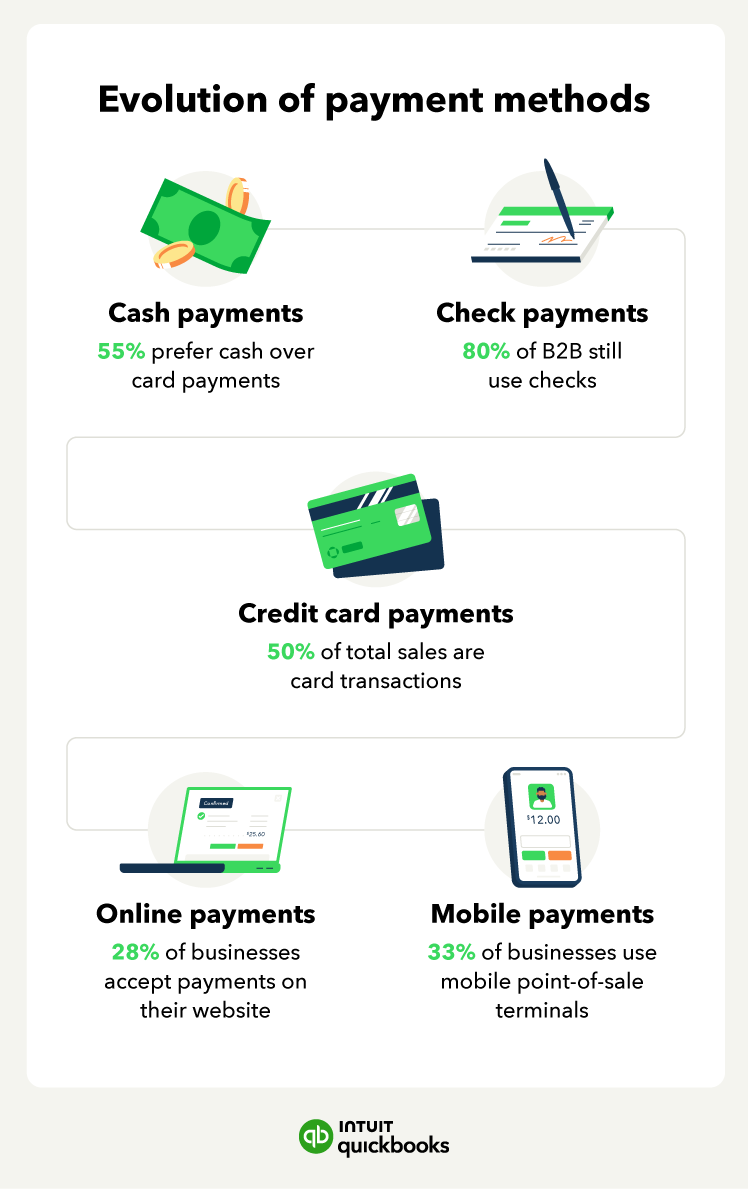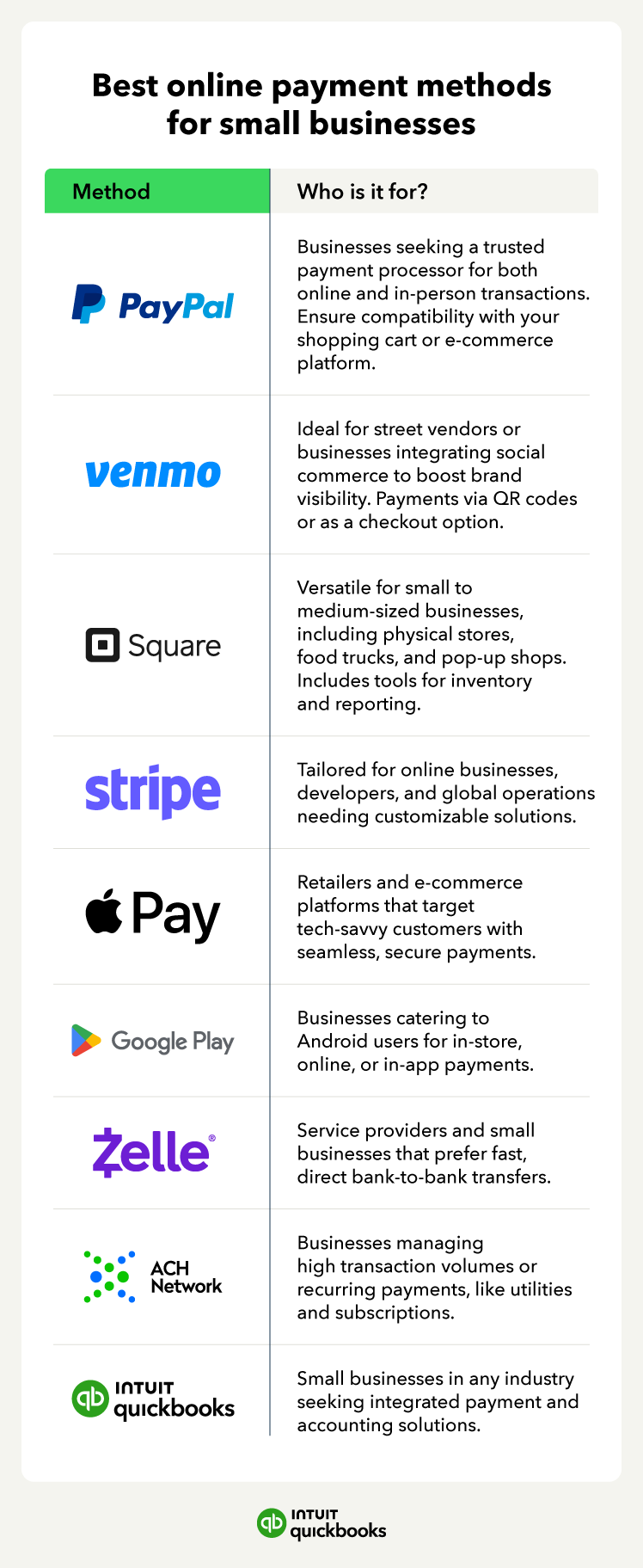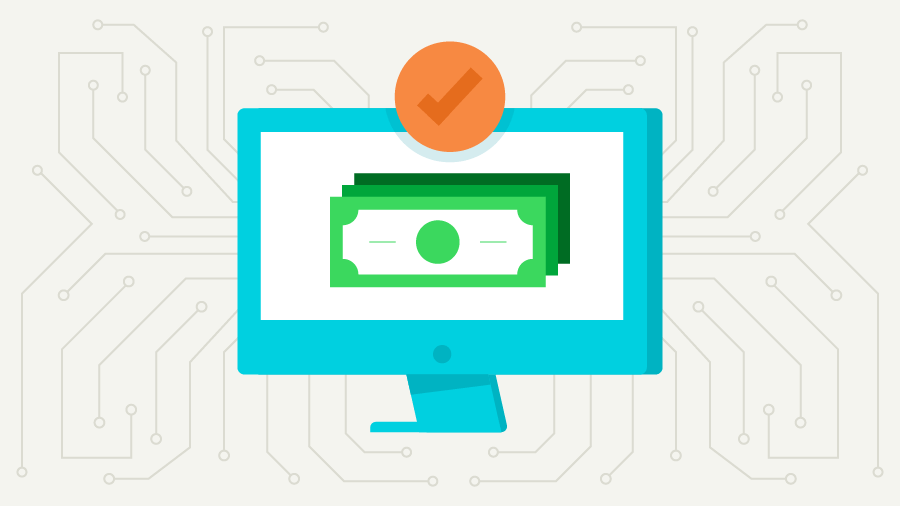Choosing the right payment method for your small business
The best payment solutions for your small business should be affordable and capable of integrating with your accounting software.
Consider your business size and needs
Choosing the right payment method starts with understanding your business’s unique characteristics. For instance, the type of business you operate plays a significant role in payment options.
Retailers may prioritize point-of-sale (POS) systems that handle in-person card transactions, while online businesses might need robust e-commerce integrations that support credit cards, digital wallets, and bank transfers.
Does my transaction volume matter?
High-volume businesses should consider systems with competitive processing fees and batch payment capabilities to save on costs and time. Meanwhile, smaller operations might prioritize user-friendly, low-cost solutions that match their scale.
What about my customer demographics?
If your target audience skews younger, digital wallets and app-based payments may align with their preferences. Where older customers may feel more comfortable with traditional methods like checks or credit cards.
Payment speed
For small businesses, cash flow is king—and quick payment processing is essential to keeping it healthy. Faster payment methods ensure you get paid promptly, helping you cover expenses and reinvest in your business.
Payment solutions like Direct Debit or Instant Bank Pay can significantly reduce the time it takes for funds to appear in your account compared to traditional methods like checks or manual invoicing.
Instant payment options are particularly valuable for industries that rely on frequent or high-ticket transactions. For example, service providers using Instant Bank Pay can collect funds directly after completing a job, avoiding delays that can disrupt their operations.
Payment collection automation
Automation can transform how your business manages payments, reducing administrative burdens and improving reliability. Systems that support recurring payments are especially useful for subscription-based models or businesses with regular customers.
Top benefits:
Free up time for other priorities: by automating the process, you eliminate the need to chase payments manually.
Helps minimize late payments: For instance, setting up automated reminders or recurring payment schedules ensures customers stay on track, reducing cash flow disruptions.
Automation improves accuracy: By reducing human involvement, you decrease the risk of errors that could lead to delayed or missed payments. This efficiency can have a tangible impact on your bottom line.
Costs and efficiency
Understanding the costs associated with different payment methods is critical to choosing the most efficient option for your business.
Top considerations:
Credit card payments: While popular, often come with higher transaction fees that can eat into profits.
Direct Debit: This option typically has lower processing fees, making it an attractive choice for recurring payments or high-volume transactions.
Hidden fees: Some providers charge additional fees like chargebacks or flat rates that can add up quickly.
Ways to boost efficiency:
Streamlined integration: Payment solutions that sync with your accounting software simplify reconciliation and save hours of manual work. This reduces administrative burdens while improving accuracy.
Avoid manual processes: Relying on multiple systems or manual payment handling increases the risk of errors. Streamlining your process can cut overhead and improve reliability.
Choose providers that balance affordability and functionality to maximize value. A smart choice now can lead to long-term cost savings and better efficiency.













 Best practices for accepting checks: Standard practice is to accept check payments written in the exact amount and issued by major banks in your state. A third-party company can help verify the legitimacy of each check.
Best practices for accepting checks: Standard practice is to accept check payments written in the exact amount and issued by major banks in your state. A third-party company can help verify the legitimacy of each check.






